Moniek Bloks's Blog, page 52
April 13, 2024
Book News Week 16
Book news week 16: 15 April 2024 – 21 April 2024
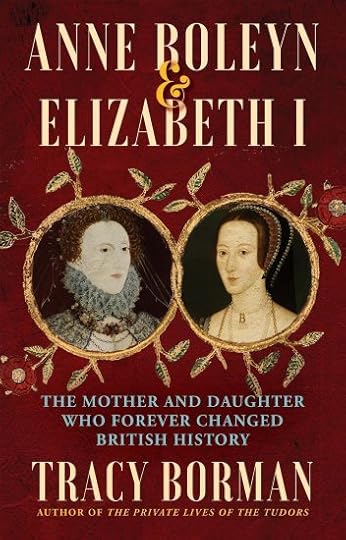
Anne Boleyn & Elizabeth I: The Mother and Daughter Who Forever Changed British History
Paperback – 16 April 2024 (US)

Women of the Anarchy
Hardcover – 16 April 2024 (US)
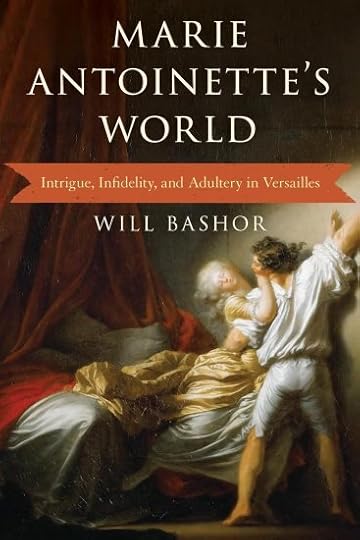
Marie Antoinette’s World: Intrigue, Infidelity, and Adultery in Versailles
Paperback – 16 April 2024 (US)
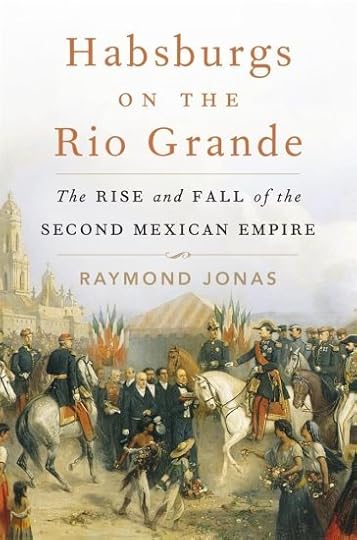
Habsburgs on the Rio Grande: The Rise and Fall of the Second Mexican Empire
Hardcover – 16 April 2024 (US)
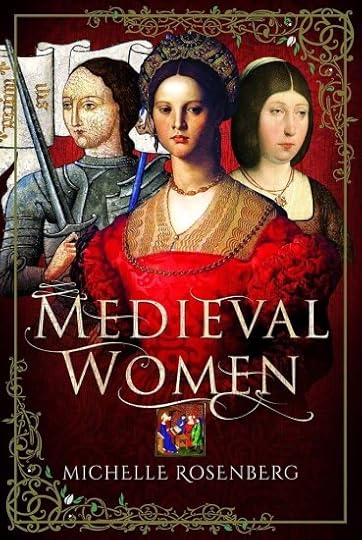
Medieval Women
Hardcover – 18 April 2024 (US)
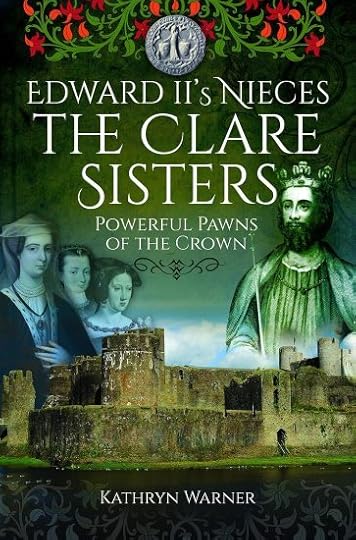
Edward II’s Nieces: The Clare Sisters: Powerful Pawns of the Crown
Paperback – 18 April 2024 (US)
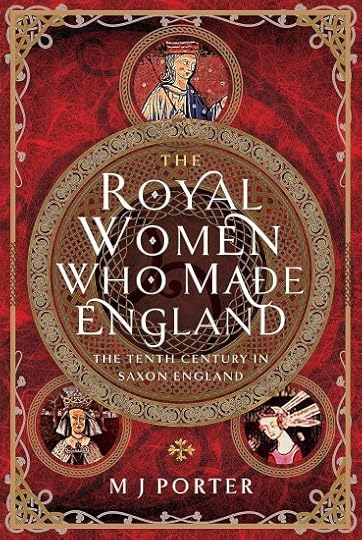
The Royal Women Who Made England: The Tenth Century in Saxon England
Hardcover – 18 April 2024 (US)
The post Book News Week 16 appeared first on History of Royal Women.
Versailles acquires rare portrait of Grande Mademoiselle
The Palace of Versailles has acquired a rare portrait of Anne Marie Louise of Orléans, Duchess of Montpensier, also known as Grande Mademoiselle.
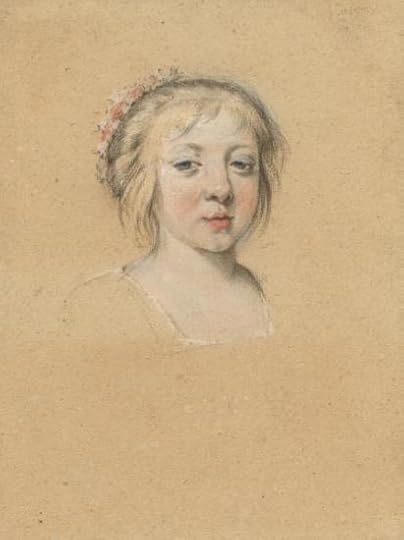 © Nicolas Schwed
© Nicolas SchwedThe portrait was done by Simon Vouet and is part of a set of pastel portraits of court figures at the request of King Louis XIII. It is one of the first known portraits of Anne Marie Louise of Orléans, and she is around eight years old.
Anne Marie Louise of Orléans was the daughter of Gaston, Duke of Orléans and Marie of Bourbon, Duchess of Montpensier, making her a first cousin of King Louis XIV. Her mother died a few days after her birth, making her one of the richest heiresses in France.
The post Versailles acquires rare portrait of Grande Mademoiselle appeared first on History of Royal Women.
April 12, 2024
The crypt at St. Michael’s Church in Munich
St. Michael’s Church in the centre of Munich, Germany, is a large Renaissance church.
In 1556, Albert V, Duke of Bavaria, gave the Society of Jesus permission to establish the Wilhelmsgymnasium. The collegiate church was founded in 1583 and was consecrated in 1597, during the reign of Albert’s son, William V, Duke of Bavaria. The facade contains statues of William and earlier rulers of the Wittelsbachs.
Click to view slideshow.The Jesuits were eventually suppressed and banned, upon which the church came into the possession of the Bavarian royal family and, later, the State of Bavaria. The church was heavily damaged during the Second World War, and it was restored between 1946 and 1948.
The church contains several royal tombs.
Click to view slideshow.The crypt also contains a side crypt with several urns with hearts.
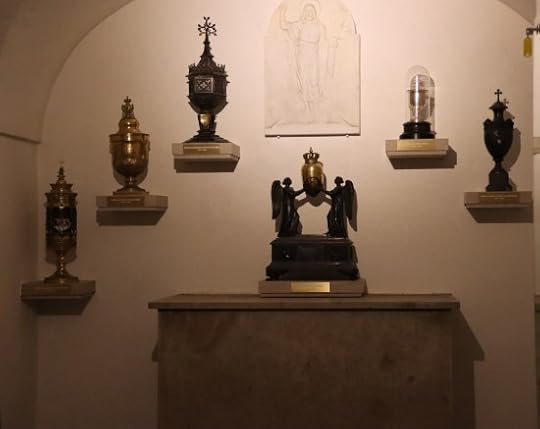 Photo by Moniek Bloks
Photo by Moniek BloksSeveral tombs are not visible to the public, including Archduchess Gisela of Austria, who was the eldest surviving daughter of Emperor Franz Joseph I of Austria and his wife, Empress Elisabeth. She and some others rest in the columbarium located next to the heart crypt.
Plan your visit here.
The post The crypt at St. Michael’s Church in Munich appeared first on History of Royal Women.
April 11, 2024
The Year of Isabella I of Castile – The attempted alliance with King Afonso V of Portugal
By 1463, the future Queen Isabella was 12 years old and of marriageable age. At the time, both her brothers were still alive, but even then, any man who would marry her would become one of the most powerful men in the country.
Her half-brother, King Henry IV, sought the support of Portugal while the nobles of Castile leaned towards Aragon. Sometime in April 1464, Isabella found herself on the way to the Portuguese border to meet with the 31-year-old King Afonso V of Portugal. He had been widowed in 1455 and was also the brother of King Henry’s wife, Joanna.
During their meeting, Isabella spoke with him in Portuguese, which she would have learned from her mother and Queen Joanna’s ladies. One observer wrote, “Her beauty so captivated him that he immediately wanted to make her his wife.”1 Afonso was the perfect where King Henry was concerned. It would remove Isabella from Castile, and Afonso already had a son, which meant their children would play a limited role in the scheme of things.
According to one author, Isabella replied, “with her strange unchildlike caution, that she could not be betrothed save with the consent of the National Cortes, an appeal to Caesar that postponed the matter for the time being. Perhaps she knew her brother well enough to doubt his continued insistence that ‘she should marry none save the King of Portugal’, or she may thus early have formed a shrewd and not altogether flattering estimate of the volatile and uncertain Afonso.”2
The post The Year of Isabella I of Castile – The attempted alliance with King Afonso V of Portugal appeared first on History of Royal Women.
April 9, 2024
Royal Wedding Recollections – Crown Prince Akihito & Michiko Shōda
On 10 April 1959, Michiko Shōda married the future Emperor Akihito of Japan. They had met on a tennis court in 1957, and the engagement ceremony took place on 14 January 1959.
Embed from Getty ImagesMichiko was a commoner, and it was widely rumoured that her future mother-in-law opposed the engagement. However, the couple gained widespread public support. The New York Times reported, “The selection of a commoner to be the future Empress is a further historic step in the democratisation of the ancient Japanese throne, whose occupant was considered almost a living god before Emperor Hirohito renounced the concept of divinity in 1946.”1
After the engagement ceremony in January, the New York Times wrote, “Sacred protocols observed for centuries in the Japanese imperial family were shattered today in the ceremonies making the engagement of Crown Prince Akihito and Miss Michiko Shoda formal. These departures from custom were only the first in an expected series of drastic changes in Imperial Household rituals for the wedding of the 25-year-old future Emperor.”2
Embed from Getty ImagesEmbed from Getty ImagesThe wedding took place on 10 April as a traditional Shinto ceremony. Parts of the wedding were also televised, making it the first imperial wedding to be seen by the general public. The New York Times reported, “Crown Prince Akihito and Michiko Shoda were married in brief but very colourful Shinto rites this morning. The young couple, in brilliant court robes of a past era, entered the sacred palace shrine together promptly at 10 a.m. They emerged married, exactly seven minutes later in a solemn procession with priests, chamberlains and ladies-in-waiting. Sips of wine taken in turn had formalised the marriage. The brief ceremony changed the 2,619-year-old history of perhaps the world’s oldest throne by placing one of the common people in line to be Empress for the first time. Thousands of cheering well-wishers, many waving tiny rising sun flags, had watched the Crown Prince and his bride leave their homes for the imperial palace earlier this morning.”
They added, “The bride was in the rarely seen formal bridal array called ‘juni-hitoe’, meaning literally ‘twelve-layered garment.’ Actually, she wore nine separate pieces, five of them silk kimonos arranged so that the sleeves of each showed beneath those of the one above. Over all, she wore a flowing cloak of thick silk. The ensemble is said to weigh fifty pounds. This was shot through with a combination of threads of different colours to give a dazzling, iridescent effect. Her black hair, ordinarily worn in a modern bob, had been trained into the high, puffed classic style of court coiffure, with long, artificial tresses added at the back.”3
From the moment Michiko sipped the wine, she became the Crown Princess of Japan.
In the afternoon, Michiko changed into a white gown for the meeting with her parents-in-law to officially report the wedding. Following this meeting, the newlyweds drove through to the city of Tokyo and waved to the crowds.
Embed from Getty ImagesEmbed from Getty ImagesIn the evening, attendants placed 24 rice cakes (one for each year of Michiko’s life) in the couple’s room. These remained there for three days as an ancient invocation of “prosperity and the blessing of the gods on a male heir.”4
The post Royal Wedding Recollections – Crown Prince Akihito & Michiko Shōda appeared first on History of Royal Women.
April 7, 2024
The Year of Isabella I of Castile – Joan of Portugal, A Queen in an impossible situation (Part four)
While at Alaejos, Joan fell in love with Archbishop Alonso de Fonseca y Ulloa’s nephew, Pedro de Castilla y Fonseca. Pedro was a descendant of King Peter of Castile through his illegitimate son, Diego. He was ten years younger than her, and Joan became pregnant. However, her pregnancy, or at least the timing of it, has been debated. Joan managed to hide her (supposed) pregnancy during the first few months, and Henry, who visited her several times, did not notice. During this time, Joan’s brother-in-law, Alfonso, died at the age of 14, leaving Isabella as the head of the rebellion.
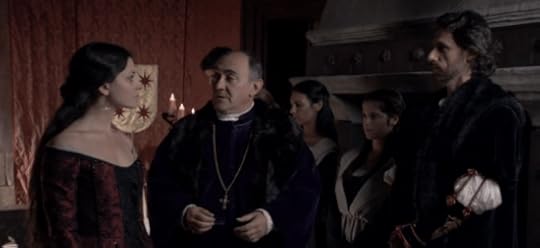 Joan meets Pedro as portrayed in Isabel (2011) (Screenshot/Fair Use)
Joan meets Pedro as portrayed in Isabel (2011) (Screenshot/Fair Use)Joan was around six months pregnant, when Henry ordered her to be taken to Madrid for discussions regarding Isabella, and their daughter Joanna. At this point, hiding the pregnancy was no longer an option, and Joan contemplated escaping. According to an anonymous chronicle, Joan “slid down the embankment and was met by her lover D. Pedro, who, as agreed, was waiting for her by the gate of the lower wall, which at the time was lined with stones that were not connected with whitewash. They promptly pushed them aside, crossed it, and following the path of the cellar on which the huts were built, went out into the countryside, where Pedro de Castilla and Luis Hurtado, son of Rodrigo Diaz de Mendoza, rode with horse as well as mules.[…]And went by order of the Queen to Cuéllar in search of Dom Beltran.”1 Reportedly, Henry only learned she was pregnant, following her escape from Alaejos.
Joan travelled to Buitrago, where she arrived in early September. She would have been around seven months pregnant, but even if the timing of this pregnancy is not correct, she did end up having at least two sons by Pedro de Castilla y Fonseca, and their existence is not disputed. Both sons were raised at the Monastery of Santo Domingo de Toledo. This liason was not only dangerous but also added fuel to the fire for her daughter, Joanna. How could she be “the King’s daughter, given the dissolute lifestyle of her mother, the Queen?”2 The agreement settled at Toros de Guisando between King Henry and Isabella made Isabella the Princess of Asturias rather than Joan’s daughter, Joanna. Joan, “as soon as she heard how the infanta Isabella had been sworn in as princess, she was very sad, both because of the dishonour it brought her and because of the loss of her daughter to such vituperation. For which, to speak without affection or passion, she bears great guilt and responsibility because if she had lived more honestly, she would not have been treated with such vituperation.”3 Joan protested to Isabella being made Princess of Asturias, but it does appear she was briefly reunited with her daughter at Buitrago.
While there, the main topic of conversation – besides protesting the agreement – seemed to have been a possible marriage between Joanna and her cousin John, the heir to the Portuguese throne. However, Joan may have feared that if Joanna was removed to Portugal, she might have been forced to go too, and Joanna’s claim would be forgotten. In the same negotiations, another marriage was discussed – that of Isabella and Joan’s brother, King Afonso V of Portugal. In any case, neither marriage would take place, and Isabella already had her heart set on Ferdinand of Aragon, whom she would marry in October 1469.
This marriage, which went against the agreement made at Toros de Guisando, gave Joan hope again. The following year, Joan and Joanna were taken to Guadalajara, the main seat of the Mendoza family, where they could be better guarded. Not much later, Henry indeed changed his mind in the face of Isabella’s marriage, and reinstated Joanna as Princess of Asturias. Joan swore an oath that Joanna was “the legitimate and natural daughter of the said lord king and mine.”4 Husband and wife were briefly reunited with their common goal – their daughter Joanna. Joanna continued to promote an alliance with Portugal.
By the end of 1471, Joan was living in Segovia. Rumours continued to circulate about her “dissolute” lifestyle, and Pedro likely held a high position in her household.5 However, in early 1472, Joan was moved to Escalona with her daughter. Pedro likely moved with them. At the end of 1472, they were in Madrid and in March 1473, Joan was back in Escalona.
In February 1474, Joanna turned 12 years old, which meant she could now enter into a marriage. Joan had continually promoted a match with Portugal, but John, the heir to the throne, had already married. Joanna would now marry John’s father, her own uncle – King Afonso V. When news reached Joan that her brother had accepted the marriage, she and Joanna were back in Madrid. However, Henry had reportedly avoided the city because he “hated” Joan.6 By then, Henry’s health was already declining and he died on 12 December 1474 and he reportedly stated, “I declare my daughter to be the heir to the kingdoms.”7 This is contested.
Isabella was quick to declare herself the new Queen, while Joanna’s guardians were slow to react. Mother and daughter were split up- Joan remained in Madrid, while Joanna was taken to Trujillo. There, Joanna was publicly proclaimed as Queen on 20 March 1475. Joanna was married to her maternal uncle, King Afonso V of Portugal, on 29 May 1475. King Afonso invaded Castile to support Joanna’s claim shortly after their betrothal ceremony on 1 May. Joan had not been present for her daughter’s wedding.
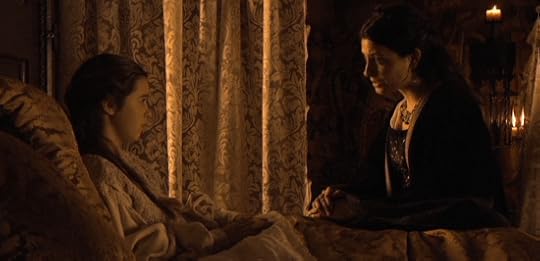 Joan prepares her daughter for the wedding night as portrayed in Isabel (2011) (Screenshot/Fair Use)
Joan prepares her daughter for the wedding night as portrayed in Isabel (2011) (Screenshot/Fair Use)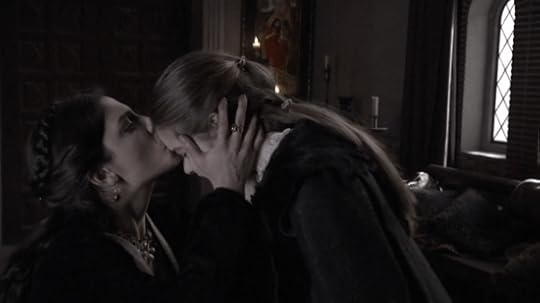 Joan bids her daughter farewell as portrayed in Isabel (2011) (Screenshot/Fair Use)
Joan bids her daughter farewell as portrayed in Isabel (2011) (Screenshot/Fair Use)Shortly after the wedding, Joan drew up her last will and testament, which may mean she had fallen ill or was pregnant again. She reportedly “spent the last six months of her life in a simple dwelling adjoining the convent of San Francisco.”8 Although this may be unlikely given the number of servants mentioned in her will.
Joan died on 13 June 1475 at the age of 36.
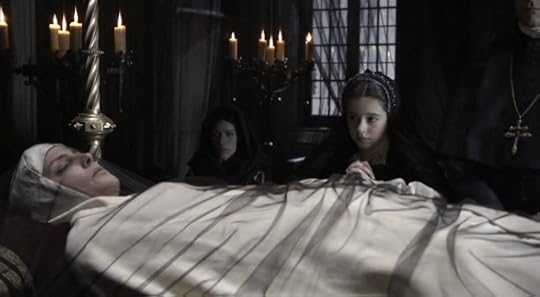 The scene as portrayed in Isabel (2011) (Screenshot/Fair Use)
The scene as portrayed in Isabel (2011) (Screenshot/Fair Use)The post The Year of Isabella I of Castile – Joan of Portugal, A Queen in an impossible situation (Part four) appeared first on History of Royal Women.
April 6, 2024
Book News Week 15
Book News week 15 – 8 April – 14 April 2024
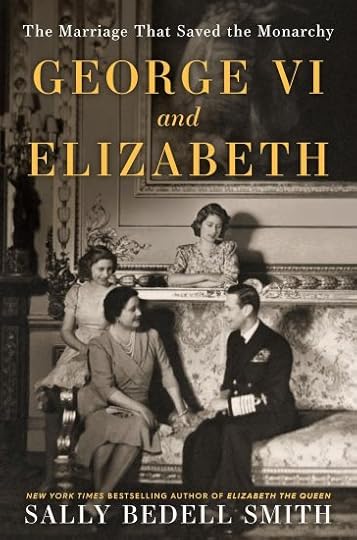
George VI and Elizabeth: The Marriage That Saved the Monarchy
Paperback – 11 April 2024 (UK)
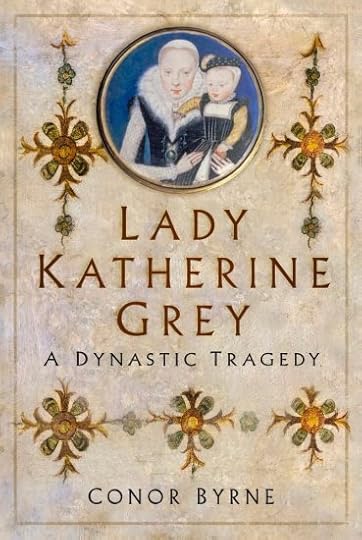
Lady Katherine Grey: A Dynastic Tragedy
Hardcover – 9 April 2024 (US)
The post Book News Week 15 appeared first on History of Royal Women.
April 5, 2024
A first look at the second season of The Serpent Queen
STARZ has released a first look at the second season of The Serpent Queen, featuring Samantha Morton as Catherine de’ Medici and Minnie Driver as Queen Elizabeth I.
Click to view slideshow.The second season of the drama is set to return in the summer 2024.
The post A first look at the second season of The Serpent Queen appeared first on History of Royal Women.
April 4, 2024
The Grave of Princess Soraya of Iran
Text by Brittani Barger
Born on 22 June 1932 in the English Missionary Hospital in Isfahan, Iran, Soraya Esfandiary-Bakhtiary was the elder child and only daughter of Khalil Esfandiary-Bakhtiary and his German wife, Eva Karl. Soraya was introduced to the Shah of Iran, Mohammed Reza Pahlavi, in 1948. The Shah had recently divorced his first wife, Princess Fawzia of Egypt.
She married the Shah on 12 February 1951 in Tehran’s Marble Palace with the bride in a Christian Dior gown and heavy snow outside. Their marriage was an unhappy one, and a divorce later occurred due to her lack of providing an heir. 25-year-old Soraya Esfandiary-Bakhtiary would flee to her parents in Cologne, Germany, to be with her family as the union was so unhappy. The Shah would attempt to convince her to return to Iran via her uncle, Sardar Assad, in early March 1958. It was unsuccessful, and the Shah demanded she return home and allow him to take a second wife. If she did not agree, he would file for divorce. On 14 May, it was announced that the couple were divorcing.
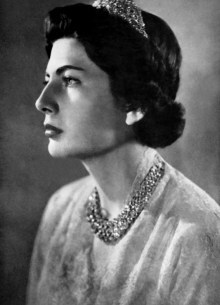 (public domain)
(public domain)It was a week later, on 21 March, that a crying Shah of Iran addressed the people to tell them of the divorce. As part of the divorce, the Shah bought her a $3 million penthouse in Paris and provided her with a $7,000 monthly alimony until his overthrow. She was also referred to as Her Imperial Highness Princess Soraya of Iran.
Soraya, who had returned to the Catholic faith, began a short-lived film career while in France. Going by only her first name, she was in the films I tre volti (The Three Faces) and She (1965) – in the latter, her character’s name was Soraya. She was also supposed to portray Catherine the Great in a film by Dino De Laurentiis, but that project never happened. In 1964, she appeared as an uncredited belly dancer in The Saint and a nightclub dancer in She in 1965. In 1975, she appeared in one episode of The Two Ronnies and in 1991, she appeared in one episode of Doctor at the Top.
The former Queen of Iran wrote a memoir in 1991 called Le Palais Des Solitudes (which was translated into English as The Palace of Loneliness), where she admitted that she had suffered from depression since the Italian’s death. This was her second autobiography after Princess Soraya: Autobiography of Her Imperial Highness.
Her last acting credit was in 1998 when she appeared as herself on the television show Legenden.
On 26 October 2001, at the age of 69, Soraya died in her Parisian home.
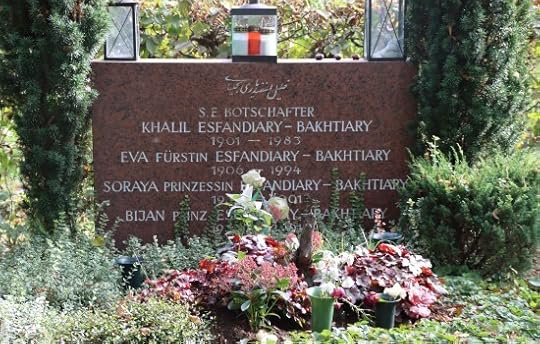 Photo by Moniek Bloks
Photo by Moniek BloksThe cause of death was never determined. Her death devastated her younger brother, who died just one week later. The funeral took place on 6 November 2001 in Paris at the American Cathedral with the Shah’s twin sister, Princess Ashraf Pahlavi and half-brother, Prince Gholamreza Pahlavi, in attendance. Soraya was buried alongside her parents, as was her brother, in the Westfriedhof in Munich.
The post The Grave of Princess Soraya of Iran appeared first on History of Royal Women.
April 3, 2024
BBC releases first-look pictures for Wolf Hall: The Mirror and the Light
The BBC has released first-look pictures for Wolf Hall: The Mirror and the Light as filming has wrapped on the forthcoming series.
Click to view slideshow.The series starts in May 1536 after the execution of King Henry VIII’s second wife, Anne Boleyn, and it will trace the final four years of Cromwell’s life.
Wolf Hall: The Mirror and the Light will be distributed internationally by Banijay Rights. The series was directed by Peter Kosminsky, adapted by Peter Straughan, and produced by Lisa Osborne. The six-part series will air on BBC One in the UK, and further distribution will be announced in due course.
The first series is already available to watch on BBC iPlayer in the UK and on PBS MASTERPIECE in the US.
The post BBC releases first-look pictures for Wolf Hall: The Mirror and the Light appeared first on History of Royal Women.



